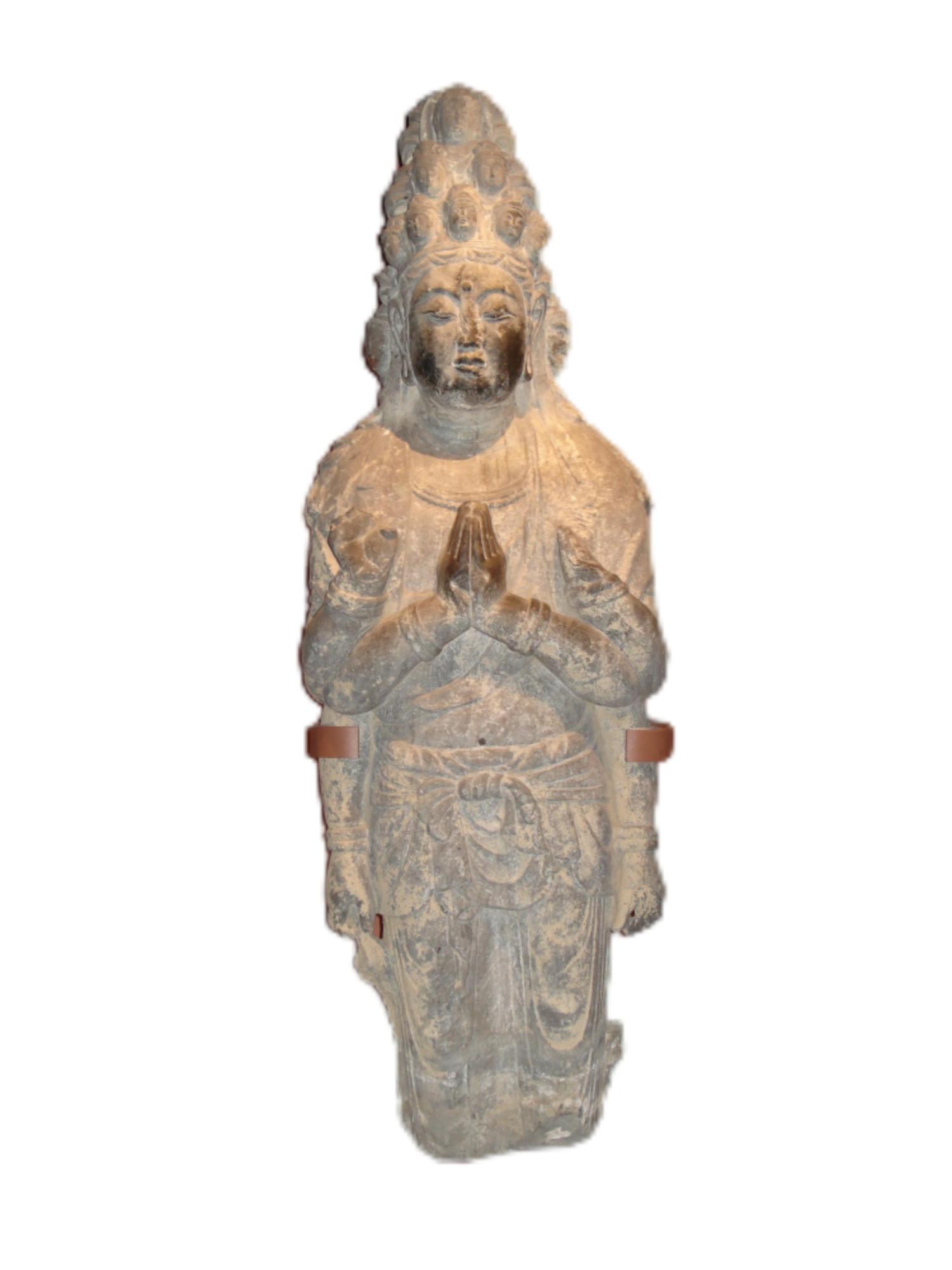Date: Changqing reign (821-824), Tang Dynasty (618-907)
Provenance: Excavated from the ruins of Dahai Temple, Xingyang, Henan province, 1976
Measurements: Height of the remaining part: 171 cm
The portion beneath the knee of this statue has been broken off. The Avalokitesvara's hair is arranged in a high coil, which bears eight small faces in three tiers. The top face is of a Buddha, identifiable by its ushisha; the other seven are of the bodhisattvas. A fearsome face is carved behind the left ear of the Avalokitesvara and a benevolent face is carved behind the right ear.
The Avalokitesvara has an urna, with six arms in three pairs carved into the body. A pair of arms are bent forward with joined palms, another pair show the hands in the mudra of preaching the doctrine, while the third pair remain hanging down by the bodhisattva's side with the left hand clasping a silk belt.
The figure is adorned with necklaces, armlets and bracelets. Its shoulders are covered by flowing silks that are thrown across the figure's shoulders and wrapped around its elbows. The lower portion of the body is covered with skirts.
This statue accords with the design of Tantric Buddhist works, evident from the beautiful and extensive decorations, which are a signature feature of Tantric statuary. Tantric Buddhist statues often feature multiple faces and arms, with various Buddhist implements held in their hands. The transformational forms of Guanyin are the most highly venerated subjects for such works, with the eleven-faced Guanyin foremost among the six Guanyins of the Tantric tradition. Tantric Buddhist sculpture flourished primarily in Sichuan of China, with this style being less popular in the central part. Excavations of esoteric sculptures such as this are particularly rare in the Henan region. As such, this work provides valuable evidence for research into the beliefs and transmission of Tantric Buddhism in China.

